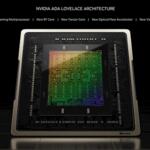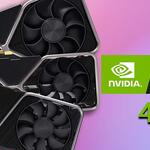EEGA
覺得
不是摩爾定律已死, 是你家不長進 漲價有理?黃仁勳:摩爾定律已死,12 吋晶圓貴超多
漲價有理?黃仁勳:摩爾定律已死,12 吋晶圓貴超多
 漲價有理?黃仁勳:摩爾定律已死,12 吋晶圓貴超多
漲價有理?黃仁勳:摩爾定律已死,12 吋晶圓貴超多
EEGA
說
14/16nm 之後的電晶體微縮有一半是靠設計上的改良, 你家的設計都不改, 當然吃不到新製程的好處
其實進入90nm以下就是這樣了吧?
EEGA
說
不是, 這是 FinFET 時代的特產. 14/16 世代一個 inverter 的 MOS 都還是 4 fin, 接下來的製程 fin 越來越少, 帳面上的電晶體密度也比實際製成微縮的比例好很多. 但是 NV 一直死守在 3 fin, 那當然就只能嘴人家 wafer 貴... (5nm 標準是只有 2 fin 而已)

沒對手啊 AMD跟INTEL顯卡都那種死樣 加上虛擬貨幣那一波爽賺 現在沒有礦老闆來批發顯卡就滿地打滾說你們都要買我的漲價顯卡
Lao Huang’s answer was somewhat surprising, from Samsung 8N to TSMC 4N, the microscopic level of improvement is about 15%, but very, unfortunately, the cost increase is more than 15%.
那文章裏很多數字的解釋應該有問題。
The response from Huang was that gains were surprisingly modest. “Processed generationally from 8N to 4N, that process gain was probably about 15%. But unfortunately, the cost goes up by more than 15%,” he explained.
Huang commented that the differences between Samsung N8 and TSMC 4N they were from one +15% scalability approximately, what we understand as higher density versus higher frequencies, but at the same time and to everyone’s misfortune, the cost increase is greater than 15%.
原來是價錢貴“超過”15%,這樣就可以理解了
 Nvidia RTX 40 graphics card upgraded from Samsung 8n...
Nvidia RTX 40 graphics card upgraded from Samsung 8n... NVIDIA CEO Declares Moore's Law Dead And Details GeF...
NVIDIA CEO Declares Moore's Law Dead And Details GeF... These are the reasons why RTX 40 graphics are so exp...
These are the reasons why RTX 40 graphics are so exp...